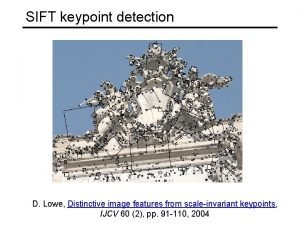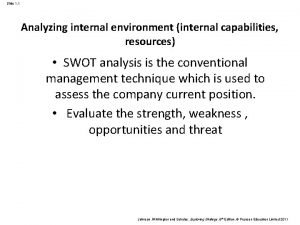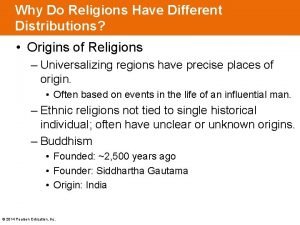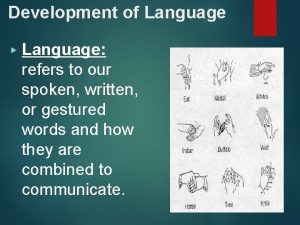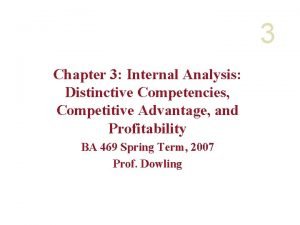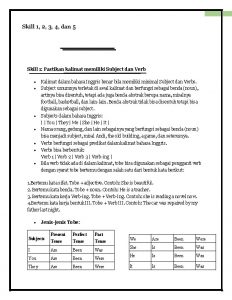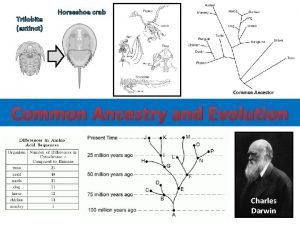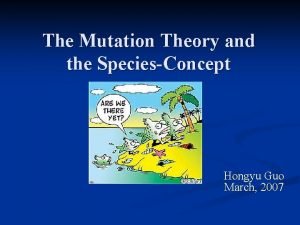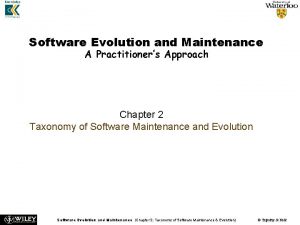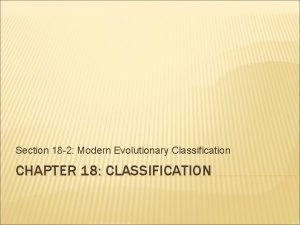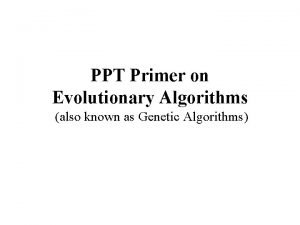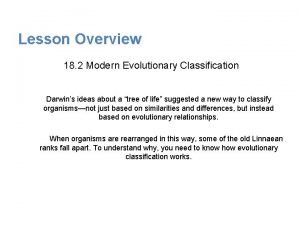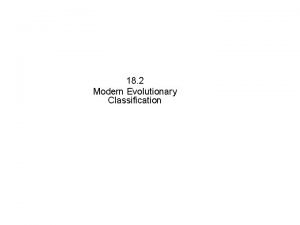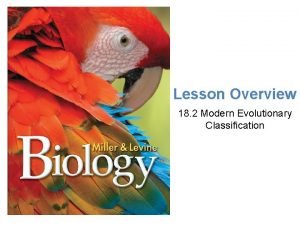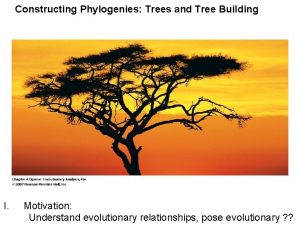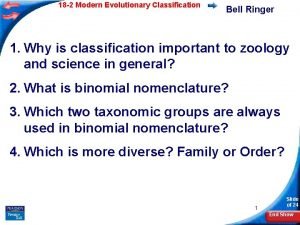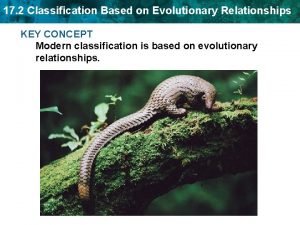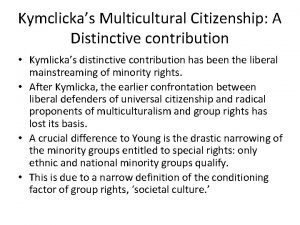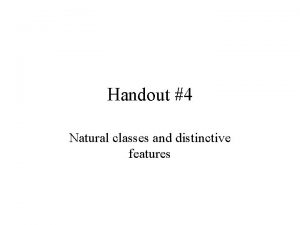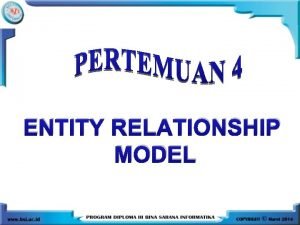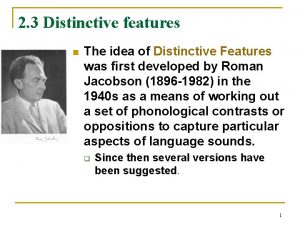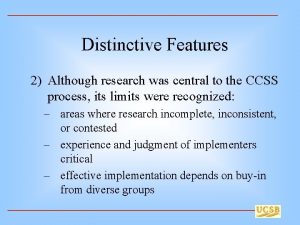31 1 Evolutionary Relationship and distinctive Features of

























































- Slides: 57


31. 1 Evolutionary Relationship and distinctive Features of Fungi n Eukaryote supergroup Opisthokonta( 後鞭毛生物) ¨ Certain closely related protists ¨ Kingdom Fungi ¨ Kingdom Animalia n Fungi arose from protists related to an amoeba that feeds by engulfing cells 2

n n n Early diverging fungi include microsporidia微孢子 蟲and chytrids (Chytridiomycota壺菌門) Zygomycetes結合菌 – polyphyletic Arbuscular mycorrhizal fungi 樹枝狀体(AM fungi) (Glomeromycota)菌根菌 Sac fungi (Ascomycota)子囊菌 Club fungi (Basidiomycota)擔子菌 3

Copyright © The Mc. Graw-Hill Companies, Inc. Permission required for reproduction or display. Supergroup Opisthokonta Basidiomycetes (club fungi) Ascomycetes (sac fungi) AM fungi Some zygomycetes Some chytrids and zygomycetes Some chytrids Microsporidia Nuclearia (protist) Choanoflagellates (protists) Metazoa (animal kingdom) Kingdom Fungi Septate hyphae, mated hyphae with 2 types of nuclei, fruiting bodies Beneficial associations with photosynthetic organisms True hyphae/mycelium KEY Critical innovations 4

31. 1 Evolutionary Relationship and distinctive Features of Fungi n Fungi are closely related to animals ¨ Both heterotrophic – cannot produce their own food ¨ Both use absorptive nutrition – secrete enzymes and absorb resulting small organic molecules ¨ Both store surplus food as the carbohydrate glycogen 5

Unique cell-wall chemistry n n n Fungal cells enclosed by tough cell walls composed of chitin Cells cannot engulf food due to rigid cell walls Cell wall also restricts mobility of nonflagellate cells 6

Unique body form n n Most have mycelia composed of hyphae 菌絲 ¨ Most of the mycelium is diffuse and inconspicuous Fruiting bodies子實體 are the visible reproductive structures ¨ Mushrooms are one type ¨ Produce spores孢子 7

Fungal Morphology Fruiting body above the substrate Mated hyphae Spores Mycelium within substrate (such as soil) Region where hyphae mate, forming a fruiting body Unmated mycelium Different unmated mycelium 8

Distinctive growth processes n n Mycelia can grow quickly when food is plentiful Grow at the edges Narrow dimensions and extensive branching provides high surface area for absorption Osmosis important in growth- entry of water produces force for tip extension 9

Hyphae tip growth and absorptive nutrition Vesicle carrying cell-wall components Vesicle carrying digestive enzymes Secreted digestive enzymes Golgi apparatus 0. 3 µm (a) Electron micrograph of a hyphal tip with numerous vesicles Small organic molecules Plasma membrane Chitin cell wall Site of new cell-wall deposition Hyphae growth (b) Mechanism of hyphal tip growth Water

Hyphae structure and nuclear division (a) Septate hypha n Septate fungi ¨ Septa - Cross walls dividing cells of mycelium ¨ Each cell has 1 or 2 nuclei ¨ Nuclear division followed by cross-wall formation 11

(b) Aseptate hypha n Aseptate fungi ¨ Not partitioned into smaller cells ¨ Multinucleate ¨ Nuclei divide without cytokinesis ¨ Coenocytic 12

n Intranuclear spindle distinguishes fungal nuclear division from plants and animals ¨ Spindle forms inside nucleus and nuclear envelope does not break down ¨ In land plants and animals, the nuclear envelope vesiculates during prometaphase and then re-forms at telophase 13

spindle pole bodies (blue) NPC is composed of core Nups (green) and FG-repeat Nups (red), mitotic entry nuclear entry of tubulin EUKARYOTIC CELL, 2007, Vol. 6, No. 9 p. 1521– 1527 14

G 2, the spindle pole bodies (blue) nucleate microtubules in the cytoplasm. The NPC is composed of core Nups (green) and FG-repeat Nups (red), which occupy the NPC central channel and restrict diffusion. Upon mitotic entry, FG-repeat Nups disperse from the central channel, allowing nuclear entry of tubulin and thus spindle formation. Insets show a magnification of a single NPC. Note that the nuclear envelope may prevent inappropriate microtubule connections between the spindle pole bodies and the chromosomes of the two nuclei which are in mitosis at the same time. 15

Fungal shape shifting n Natural mycelium may be irregular in shape ¨ In liquid culture it is spherical ¨ On agar it is more 2 dimensional 16


Fungal asexual and sexual reproduction Asexual reproduction n Many fungi reproduce both sexually and asexually by spores Many reproduce only asexually Conidia – asexual spores at the tips of hyphae 18

n n Medically important fungi that reproduce primarily by asexual means include the athlete’s foot fungus (Epidermophyton floccosum) and the infectious yeast (Candida albicans) Yeasts are fungi of various lineages that can occur as unicells; they reproduce by asexual budding 19

Sexual reproduction n n Involves union of gametes, zygote formation and meiosis Gametes of most fungi are cells of hyphal branches ¨ Mating types differ biochemically ¨ Hyphal branches fuse between compatible mating types 20

The reproduction cycle of many types of fungi Dikaryotic mycelium Spores Cell division Hyphal branches of compatible mating types 21

Mating process n n Most sexual organisms have plasmogamy (fusion of gametes’ cytoplasm) followed by karyogamy (fusion of gametes’ nuclei) In fungi, after plasmogamy, nuclei may remain separate for a long time ¨ Mycelium is dikaryotic or heterokaryotic 22

n Some fungi persist as dikaryons, producing clones that can live for hundreds of years n Dikaryotic mycelia are functionally diploid n Eventually, dikaryotic mycelia produce fruiting bodies, the next stage of reproduction 23

Fruiting bodies子實體 n Dikaryotic mycelium may produce a fleshy fruiting body n All cells of the fruiting body are dikaryotic n When mature, the 2 nuclei in cells will fuse n Produces zygotes (only diploid stage) n Undergo meiosis to produce haploid spores 24

n Structure of fruiting bodies varies in ways that reflect adaptations for spore dispersal by wind, rain or animals. Phallus impudicus 鬼筆菌 25

n Many fungi produce substances in the fruiting body to deter consumption ¨ Toxins can cause liver failure requiring a transplant ¨ Hallucinogenic or psychoactive substances Claviceps purpurea 麥角病 26

Fungal ecology n Decomposer fungi are essential component’s of the Earth’s ecosystems n Work with bacteria n Only certain bacteria and fungi can break down cellulose n Release minerals to the soil and water 27

n Some fungi are predators trapping tiny soil nematodes Arthrobotrys anchonia 28

Fungal pathogens n n 5000 species cause serious crop diseases ¨ Rust spores can be spread on the wind or by other means Several human diseases ¨ Dermatophytes - athlete’s foot, ringworm ¨ Pneomocystis carinii pneumonia in AIDS 黑銹病 29

n Dimorphic fungi ¨ Live as spore-producing hyphae in the soil ¨ Transform into pathogenic yeasts when mammals inhale their wind-dispersed spores ¨ Host body temperature triggers the change from hyphae to yeast form 30

Dimorphic fungi Human body temp Histidine kinase hyhae Yeast form Blastomyces dermititidis causes blastomycosis Histiplasma capsulatum causes histoplasmosis Coccidioides immitis causes coccidiomycosis 31

Fungi form beneficial associations with other species Fungal associations: n n Beneficial associations with photosynthetic partners Mycorhizzal fungi 菌根 Endophytes 體內寄生型 Lichens 地衣 32

Mycorhizzae菌根 n Association between the hyphae of certain fungi and the roots of most seed plants n More than 80% of terrestrial plants have mycorrhizae n Plants receive increased supply of water and mineral nutrients n Fungi get organic food molecules from the plants n 2 most common types are endomycorrhizae and ectomycorrhizae 33

34

n Endomycorrhizae ¨ Fungal hyphae penetrate the spaces between root cell walls and plasma membranes and grow along the outer surface of the plasma membrane ¨ Arbuscular mycorrhizae (AM) form highly branched structures with high surface area 35

n Ectomycorrhizae ¨ Coat root surface and grow between cells of roots ¨ Some species of oak, beech, pine, and spruce trees will not grow unless their ectomycorrhizal partners are also present Copyright © The Mc. Graw-Hill Companies, Inc. Permission required for reproduction or display. Ectomycorrhizal hyphae Root cells Ectomycorrhizal hyphae coating a root tip (a) Ectomycorrhizal fruiting body (b) SEM of ectomycorrhizal hyphae (c) Hyphae invading intercellular spaces a: © Jacques Landry, Mycoquebec. org; b: © Courtesy of Larry Peterson and Hugues Massicotte 36

Gene Expression in Ectomycorrhizal Fungi Explains How They Live Both Independently and in Partnership with Plants n Laccaria bicolor雙色蠟蘑model organism ¨ Mycelium grows well by itself and in symbiosis with tree roots n 2008 genome study explained its characteristics n L. bicolor has a larger genome than nonmycorrhizal fungi – suggests that symbiosis has accelerated evolution n High number of genes associated with plasma membrane transport n Lacks genetic capacity to break down cellulose and lignin

Fungal endophytes n Live within the leaf and stem tissues of various types of plants n Endophytes obtain organic food molecules from plants n In turn contribute toxins or antibiotics that deter foraging animals, insect pests, and microbial pathogens n Plants with endophytes often grow better than plants of the same species without endophytic fungi 38

Márquez and Associates Discovered That a Three-Partner Association Allows Plants to Cope with Heat Stress n Endophytic fungus Curvularia protuberata commonly lives within aboveground tissues of the grass Dichanthelium lanuginosum ¨ n n n Unusual in its ability to grow on very hot soils Alone, both die when temp reaches 38ºC Together, they can survive near 65ºC Curvularia thermal tolerance virus also involved Researchers determined that the virus infected Fungus (but not virus-free fungi) could also protect a distantly related crop plant (tomato) from heat stress

Copyright © The Mc. Graw-Hill Companies, Inc. Permission required for reproduction or display. GOAL To determine if a virus is essential to the protective role of endophytic fungi to host plants under heat stress. KEY MATERIALS Curvularia thermal tolerance virus (Cth. TV), cultures of the endophytic fungus Curvularia protuberata infected with Cth. TV, C. protuberata cultures free of Cth. T V , and Dichanthelium lanuginosum plants. Experimental level 1 Plant 25 replicate containers with D. lanuginosum lacking fungal symbionts (a) or with C. protuberata endophytes that either did (b) or did not (c) have virus. Compare the effects of virus on the ability of the fungus to confer heat stress protection. (a) No fungus, no virus 2 Expose plants to heat stress treatment (up to 65°C) for 2 weeks in a greenhouse. 3 Count the number of plants that were green (alive), yellow (dying), or brown (dead). (b) Fungus and virus (c) Fungus, no virus Keep environmental conditions constant to reduce experimental erro r. (Cth. TV)+ Endophyte (a) THE DATA (b) KEY Brown, dead Yellow, dying Green, healthy Endophyte Assess plant survival in the presence or absence of fungus and/or virus. (c) 5 Number of plants 4 Conceptual level 6 CONCLUSION A virus enhances the protective role of endophytic fungi in this grass species. The next step will be to try to determine just how the virus changes the fungus so that the fungus is able to protect the plant from heat stress. SOURCE Márquez, Luis M. et al. 2007. A virus in a fungus in a plant: Three-way symbiosis required for thermal tolerance. Science 315: 513– 515. (a) (b) No fungus, Fungus no virus and virus (c) Fungus, no virus

Lichens n n n Partnerships of particular fungi and certain photosynthetic green algae and/or cyanobacteria藍綠菌 25, 000 lichen species ¨ Not all descended from a common ancestor ¨ At least five separate fungal lineages 3 major forms – crustose( 殼狀), foliose( 葉狀), fruticose( 灌木狀) Photosynthetic partner provides organic food molecules and oxygen Fungal partner provides carbon dioxide, water, and minerals 41

Crustose lichen Foliose lichen Microscopic view of a cross section of a lichen Fruticose lichen 42

n Lichens reproduce ¨ Sexually with fungal partner producing fruiting bodies and sexual spores ¨ 1/3 can only reproduce asexually using soredia n Small hyphal clumps surrounding a few algal cells n Clones 43

Biotechnology applications n n Fungi convert inexpensive organic compounds into citric acid, glycerol, and antibiotics Distinctive flavor of blue cheese Saccharomyces cerevisiae for bread, beer and wine Replace chemical procedures that generate harmful waste products ¨ Wood pulp bleaching 44

5 fungal kingdoms n n n Chytridiomycota 壺菌門 Zygomycota 結合菌 Glomeromycota菌根菌 Ascomycota子囊菌 Basidiomycota擔子菌 45

Chytridiomycota 壺菌門 n n n n Simplest fungi Earliest fungal phylum Some are single, spherical cells that may produce hyphae Others are branched, aseptate hyphae Only fungi to produce flagellate cells – for spore or gamete dispersal Live in water or moist soil Most decomposers, some parasites Not monophyletic 46

Zygomycota 結合菌 n n n n Mycelium mostly aseptate hyphae Produces asexual spores in sporangia Named for zygospore produced sexually Zygospore production begins with development of gametangia Most are saprobes in soil Some are parasites Not monophyletic 47

The asexual and sexual cycle of a zygomycetes, The black bread mold Rhizopus stolonifre Asexual sporangia Aseptate hyphae Bread loaf Spores KEY (a) Asexual reproduction Haploid Diploid Heterokaryotic Fertilization Zygospore Gametangium Cross wall Aseptate hypha Spore Hypha Mitosis Parental hyphae Meiosis a: © Peres/Custom Medical Stock Photo; b: © William E. Schadel/Biological Photo Service (b) Sexual reproduction 48

Glomeromycota 菌根菌 n n Arbuscular mycorrhizal (AM) fungi叢枝菌根 Aseptate hyphae Only asexual reproduction using unusually large multinucleate spores Ability of early plants to live on land may have depended on help from fungal associations 49

Copyright © The Mc. Graw-Hill Companies, Inc. Permission required for reproduction or display. Ascomycota 子囊菌 Pore Septum (a) Simple pore—ascomycetes a: Micrograph courtesy of Timothy M Bourett, Du. Pont Crop Genetics, Wilmington, DE USA n n n Hyphae subdivided into cells by septa with simple pores Unique sporangia called asci 子囊 Produce sexual spores called ascospores 子囊孢子 Asci produced on fruiting bodies called ascocarps子囊殼 Occur in terrestrial and aquatic habitats 50

Copyright © The Mc. Graw-Hill Companies, Inc. Permission required for reproduction or display. Diploid nucleus Ascocarp (a) Asexual reproduction Ascus Hyphal branches Dikaryotic mycelium Fertilization Dispersing spores 8 ascospores 4 haploid nuclei Meiosis Mitosis KEY Fruiting body Haploid Diploid Heterokaryotic (b) Sexual reproduction of the ascomycete Aleuria aurantia 51

n Many decomposers and parasites Chestnut blight 栗子病 Dutch elm disease荷蘭榆樹病, apple scab蘋果斑點病 ¨ Truffles, morels ¨ Common lichen partner ¨ Many yeasts ¨ 52

Copyright © The Mc. Graw-Hill Companies, Inc. Permission required for reproduction or display. Basidiomycota 擔子菌 Septum Endoplasmic reticulum (ER) (b) Complex pore—basidiomycetes © Charles Mims n n Hyphae subdivided into cells by septa with complex pores Most recently evolved group of fungi along with Ascomycota Important decomposers and mycorrhizal partners Produce mushrooms, puffballs, stinkhorns, shelf fungi, rusts and smuts as fruiting bodies 53

n n Named for basidia that produce sexual spores called basidiospores擔孢子 Fruiting bodies called basidiocarps Clamp connections help distribute nuclei during cell division Reproduce asexually by various types of spores 54

Utilago maydis corn smut Shelf fungi 暗礁菌 玉米黑穗菌 55

The sexual life cycle of the basidiomycetes fungus Corprinus disseminatus Clamp connection forms Mitosis and cell growth in tip cell KEY New septum forms Hyphal branch carries 1 nucleus Haploid Diploid Heterokaryotic Basidium with haploid nuclei Nuclear distribution complete Gill of mushroom Diploid nucleus Basidiospores Basidium (left): © Biophoto Associates/Photo Researchers; (right): © Dr Jeremy Burgess/Photo Researchers 56

 Types of occupational dance
Types of occupational dance Distinctive image features from scale-invariant keypoints
Distinctive image features from scale-invariant keypoints Distinctive features phonology
Distinctive features phonology Distinctive image features from scale-invariant keypoints
Distinctive image features from scale-invariant keypoints David g lowe
David g lowe Distinctive image features from scale-invariant keypoints
Distinctive image features from scale-invariant keypoints Threshold and distinctive capabilities
Threshold and distinctive capabilities Is defined as a distinctive and relatively stable pattern
Is defined as a distinctive and relatively stable pattern Threshold and distinctive capabilities
Threshold and distinctive capabilities Strengths and weaknesses of evolutionary theory page 386
Strengths and weaknesses of evolutionary theory page 386 Prescriptive process models
Prescriptive process models Iterative and evolutionary development
Iterative and evolutionary development Iterative process planning
Iterative process planning Difference between rm and crm
Difference between rm and crm The distinctive characteristics of the artwork
The distinctive characteristics of the artwork Why do religions organize space in distinctive patterns
Why do religions organize space in distinctive patterns Traditional expression of love separation and loneliness
Traditional expression of love separation and loneliness Key issue 1 why are downtowns distinctive
Key issue 1 why are downtowns distinctive Why do religions have different distributions
Why do religions have different distributions Language is
Language is What makes a landscape distinctive
What makes a landscape distinctive Distinctive competencies
Distinctive competencies Distinctive competencies
Distinctive competencies The spices flavoring the meal were quite distinctive
The spices flavoring the meal were quite distinctive Competitiveness, strategy, and productivity
Competitiveness, strategy, and productivity Chapter 2 lesson 1 building health skills
Chapter 2 lesson 1 building health skills Asia landforms
Asia landforms Africa landforms
Africa landforms Art of combining spoken and written words
Art of combining spoken and written words Distinctive spirit of an institution
Distinctive spirit of an institution What is psychology
What is psychology Vuzzer
Vuzzer Ancestry
Ancestry Modern evolutionary synthesis
Modern evolutionary synthesis Evolutionary factors
Evolutionary factors Evolutionary maintenance
Evolutionary maintenance Evolutionary software process models
Evolutionary software process models Section 18-2 modern phylogenetic taxonomy
Section 18-2 modern phylogenetic taxonomy Evolution of logistics ppt
Evolution of logistics ppt Species tree
Species tree The term extrinsic motivation refers to reasons to act that
The term extrinsic motivation refers to reasons to act that Evolutionary theory of motivation
Evolutionary theory of motivation Evolutionary theory of motivation
Evolutionary theory of motivation Drive-reduction theory meme
Drive-reduction theory meme Evolutionary theory of motivation
Evolutionary theory of motivation Psychology 7 perspectives
Psychology 7 perspectives 18.2 modern evolutionary classification answers
18.2 modern evolutionary classification answers 18-2 modern evolutionary classification
18-2 modern evolutionary classification Section 18-2 modern evolutionary classification
Section 18-2 modern evolutionary classification Introduction to evolutionary computing
Introduction to evolutionary computing Evolutionary perspective of psychology
Evolutionary perspective of psychology Whale evolutionary tree
Whale evolutionary tree Evolution section 3 shaping evolutionary theory
Evolution section 3 shaping evolutionary theory Artiodactyla family tree
Artiodactyla family tree Red panda life cycle
Red panda life cycle Wolf classification
Wolf classification Classification based on evolutionary relationships
Classification based on evolutionary relationships Classification based on evolutionary relationships
Classification based on evolutionary relationships




